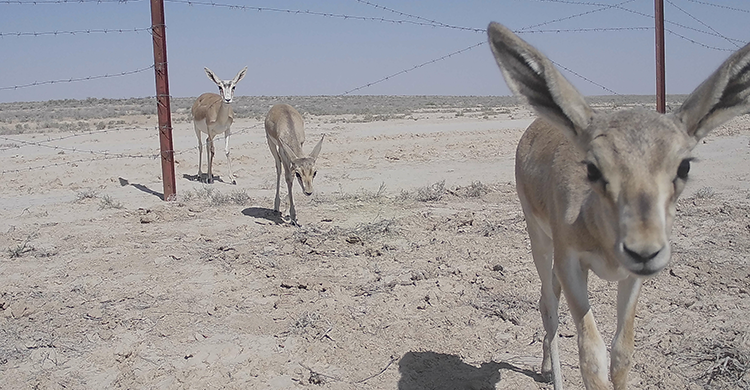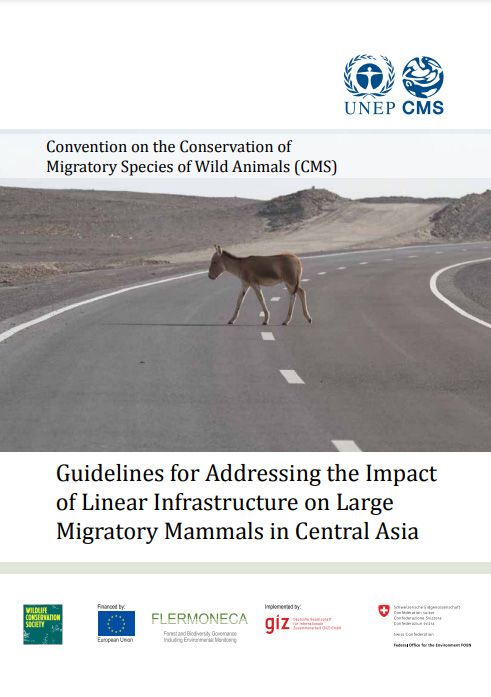International Experts to Support the Implementation of the Range-Wide Strategy for the Conservation of the Persian Leopard

Persian Leopard © WWF Germany
Authors: Igor Khorozyan, Mohammad Farhadinia, Tatjana Rosen
The Persian Leopard (Panthera pardus tulliana) is an endangered subspecies of the Leopard, numbering 750–1044 individuals in the wild, whose distribution area includes the territories of 9 countries (Afghanistan, Armenia, Azerbaijan, Iran, Iraq, Pakistan, Russia, Türkiye, and Turkmenistan). It occasionally occurs in Georgia and Kazakhstan, with an unconfirmed presence in Uzbekistan. Iran has the largest population (528-732 individuals), followed by Turkmenistan (60–80 individuals). The Persian Leopard occurs in a variety of habitats but prefers mountain ranges covered with forests, woodlands, and scrublands, with an essential presence of rocky outcrops and precipitous slopes. Wild ungulates make most of their prey (80–95%), including the CMS-listed Urial (Ovis vignei) and Goitered Gazelle (Gazella subgutturosa), Bezoar Goat (Capra aegagrus), Wild Boar (Sus scrofa), and other species. Wherever wild prey is scarce, or opportunities arise, Leopards may kill smaller wild animals and even domestic animals.
The main threats to the survival of Persian Leopards throughout their range are retaliatory killing in response to Leopard attacks on domestic animals, especially livestock, illegal trophy hunts, prey depletion due to overgrazing by livestock and poaching, and habitat loss and fragmentation. By including the Leopard in Appendix II, CMS Parties recognised that the species has “an unfavourable conservation status that would significantly benefit from international cooperation.” The CMS Central Asian Mammals Initiative (CAMI) and its Programme of Work (POW) are the Convention’s instruments aiming to strengthen international cooperation for conserving multiple species, including the Persian Leopard, in the wider Central Asian region. As mandated by the POW, the Range-Wide Strategy for the Conservation of the Persian Leopard was developed at the First Range State Meeting for the Persian Leopard, September 20–22, 2022, in Tbilisi, Georgia. The majority of the Range States, including the stronghold of the Persian Leopard, the Islamic Republic of Iran, endorsed the strategy, which provides a comprehensive framework for action and is based on the latest information about threats and the status of the Persian Leopard as published in the Cat News Special Issue No. 15.
While working together on the Cat News Special Issue, experts from Persian Leopard Range States and beyond have formed the Persian Leopard Working Group (PeLeWG) as an affiliated partner of the IUCN/SSC Cat Specialist Group to serve as a technical coordination group for planning and supporting Persian Leopard conservation action. The vision of PeLeWG is to ensure the continued survival of Persian Leopards and their prey in coexistence with local communities in their natural habitats. The group aims to support the implementation of the relevant Activities of the CAMI POW and the Range-wide Strategy, and its activities include:
- Gathering information on Persian Leopards and making it available for decision-makers
- Informing the authorities
- Providing expert advice
- Supporting the development and implementation of conservation actions and framework documents
- Supporting the IUCN/SSC Cat Specialist Group
- Facilitating research and conservation projects on Leopards, their prey, and habitats
- Producing a triennial report of PeLeWG activities
PeLeWG currently has more than 40 members from countries across the subspecies range, and its work plan for 2023–2024 is focused on capacity-building and outreach activities, supporting ranger award programmes, and population monitoring. Further activities will be implemented soon. In 2026, the PeLeWG will produce a triennial report on its activities and make it available on the PeLeWG website.
Last updated on 24 April 2024






